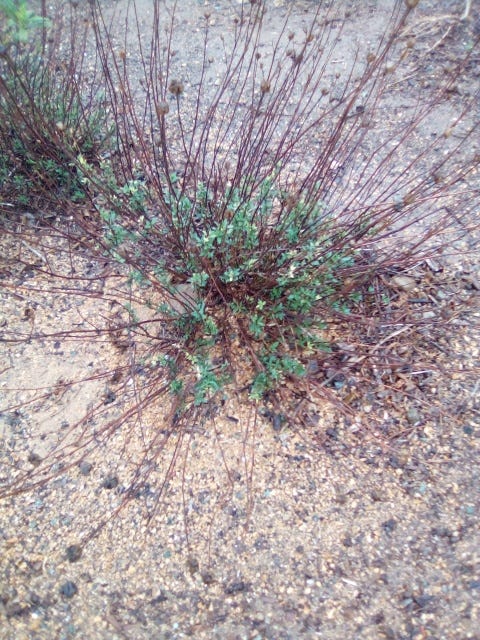In touch: Willowy monardella
This delightful member of the mint family is one of the world's rarest and most endangered plants
I thought that the willowy monardella that I’d planted in the pollinator garden four years ago had given up the ghost, that they had dried up and died. In this garden where I work I’ve lost a number of plants over the last five or six years. A lot of times people just walk through the garden and wind up stomping on the plants. Critters eat the plants, too. But I’ve also had a lot of plants just dry up and die, mostly because of the drought that we’ve had for the last several years. For the monardella, the branches from last year have remained dry and brittle. They normally come back in early November, but there had been no sign of greenery anywhere on the plants. I was pretty sure that I’d lost them. But just this last week, starting at the bases of the two plants, buds sprouted and the delicate, small leaves reappeared along the lower reaches of the old stems.
The monardella branches from last year have remained dry and brittle. They normally come back in early November, but there had been no sign of greenery anywhere on the plants. I was pretty sure that I’d lost them. But just this last week, starting at the bases of the two plants, buds sprouted. Small delicate, leaves reappeared along the lower reaches of the old stems. They’re alive!

Last year, here in San Diego County, we only received about two and a half inches of rain. Average rainfall for a given year in coastal San Diego County is around ten inches. I usually water the garden throughout the year, but I was not at the zoo for some portions of last year because of COVID, and the garden did not get as much water as it should have. I thought the monardella in my garden had just dried up too much, as other plants have done.
Keep reading with a 7-day free trial
Subscribe to The Green Dispatch to keep reading this post and get 7 days of free access to the full post archives.



